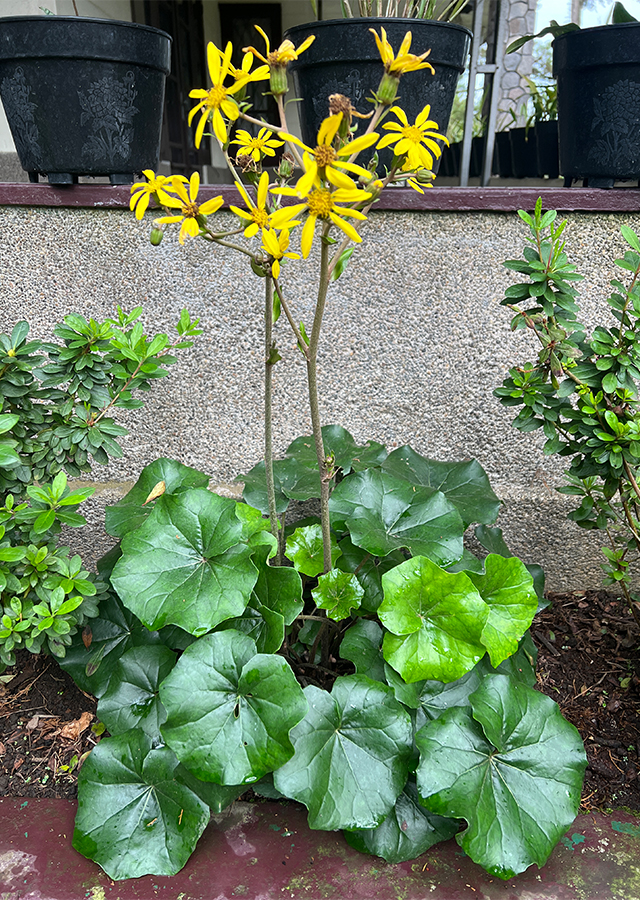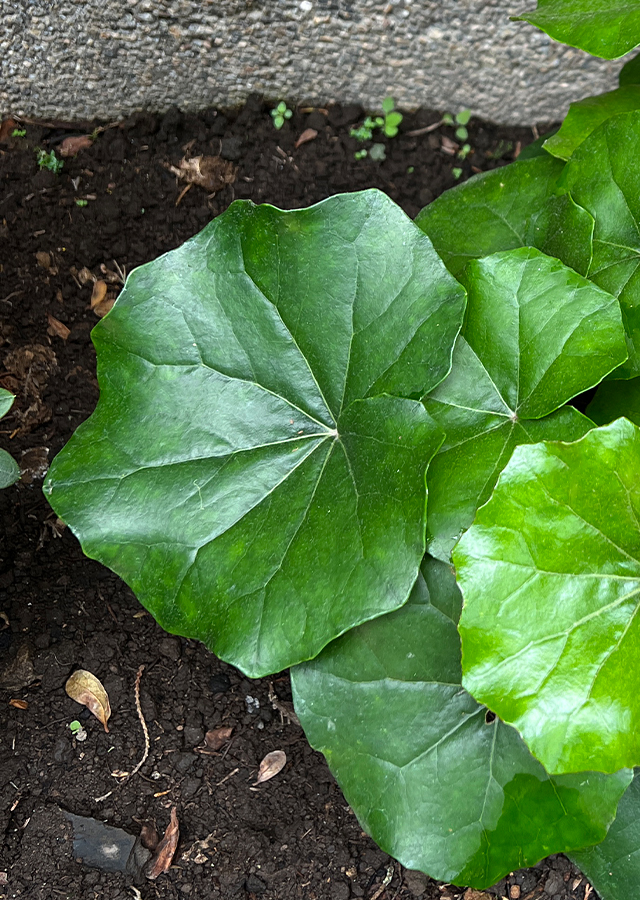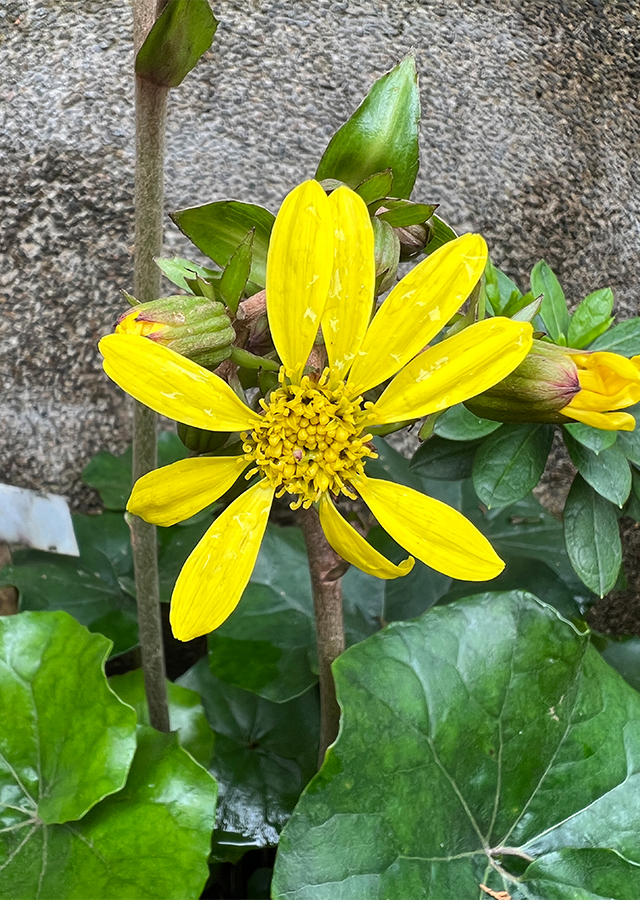Traditional Herbs from Farfugium japonicum
smallpox
- Take enough fresh ligularia leaves, wash them thoroughly.
- Crush them into a paste.
- Apply the leaf paste on the smallpox.
What is Farfugium japonicum Looks like??



Parts of Farfugium japonicum that could be used
- Leaves
- Roots
Farfugium japonicum Distribution
Ligularia is native to damp grasslands and riverbanks in Japan and other East Asia (China and Korea). This species is often planted by people as an ornamental plant, ground cover plant, and plant for cut flowers. Ligularia, generally taken from nature for local use as food and medicine. Where, the stems and leaves can be consumed as an addition to salads, soups, and others. As a medicinal plant, Ligularia has also been used in traditional medicine and as an edible herb in China and Korea. In Korea, this plant is used as an antipyretic. Recently, the essential oils of this plant have been found to have several functions including antioxidant and antimicrobial effects.Agroecology of Farfugium japonicum
Ligularia grows naturally along rivers and coasts and in damp grasslands in Japan, China and Korea. Also found growing in forests, valleys and lowland grasslands, rocky cliffs near the coast, grassy slopes, and in very damp places. Best grown in fertile, organic-rich, loose, moist, well-drained soil. This plant also likes wet soil conditions but cannot grow long in wet soil. Its growth requires a protected position or shade, either partial shade or full shade. Ligularia often wilts on a sunny day if grown in a sunny spot. This plant also likes environmental conditions with relatively warm temperatures, and is less tolerant of cold conditions.
Morphology of Farfugium japonicum
- Sturdy rhizomes, up to 1.2 cm in diameter.
- Soft stems, green.
- Single leaves, large, shiny, thick, rounded leaf tips, curved or reniform leaf bases (kidney shape, short and wide, like hibiscus leaves) and less wide, the leaf edges are wavy, toothed or palmate lobed, dark green, the leaf veins are fingered, the texture of the young leaves is covered with gray-brown hairs on both surfaces, then the leaf stalks are long. puberty dense when young, glabrous, base of midrib short and densely hairy inside the midrib.
- Flowers are yellow with a daisy-like shape (ligulate). Have 8 - 12 ribbons (ligulate), yellow, ligulate is oval or spatula-shaped, apex. rounded or pointed. Densely pubescent yellowish when young, more or less glabrous, very densely pubescent at the base. The anthers are caudate at the base. 2-7, arranged in corymbiform and hairy petioles. The involucral bracts are campanulate (bell-like), tapered tip (acuminate), hairy back, brown inner edge.
- The fruit is cylindrical, reaches about 7 in length. mm, longitudinally ribbed and covered with rows of short hairs.
Cultivation of Farfugium japonicum
Plant propagation is through seeds, rhizomes, and separation of seedlings.
Farfugium japonicum, more details :
Chemical Content of Farfugium japonicumEssential oils (1-undecene, 1-nonene, b-caryophyllene, a-copaene, g-curcumene, germacrene D, 1-decene), trichloroic acid (dimethacrylic acid).
Benefits of Farfugium japonicum
Treats coughs, accelerates wound healing, bronchitis, diarrhea, irregular menstruation, bruising and mastitis (inflammation of breast tissue), internal medicine to treat fish poisoning, and external medicine to treat lacquer poisoning (caused by Toxicodendron species), also applied to abscesses suppuration and smallpox. Has anti-inflammatory, antioxidant, antimicrobial and antipyretic activity.
Simplisia of Farfugium japonicum
Another Facts for Farfugium japonicum :
Synonym of Farfugium japonicum-
Habitus of Farfugium japonicum
Herb. Annual herb, forming clumps that grow from the rootstock of the rhizome, capable of growing to a height of about 70 cm
Habitat of Farfugium japonicum
- Riverside", "Forest", "Coast", "Rocky Area", "Grassland
No comments:
Post a Comment